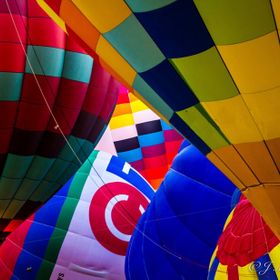Views
3870
Likes
Awards
Contender in the Photography Awards
Chatter Award
Zenith Award
Top Shot Award 21
Featured
Community Choice Award
Peer Award
Absolute Masterpiece
Top Choice
Magnificent Capture
Superb Composition
Outstanding Creativity
All Star
Superior Skill
Genius
Virtuoso
Top Ranks
Same photographer See allBehind The Lens
Behind The Lens
Location
I captured this photo while on safari in the Sabi Sand Reserve in South Africa. This female leopard was sitting on a termite mound just outside of camp. Quite a pleasant surprise to see a leopard when you are just starting out in the morning.Time
We got up about 4:00am in the morning and started our game drive just shortly after having coffee and a bite to eat. Everyone was excited after hearing there was a lot of animal activity during the night and we couldn't wait to get started. Shortly after we left we saw a few impala roaming around, many of the usual birds you see in Africa, which are always beautiful to catch in the morning light and some vervet monkeys watching us and performing their usual mischievous antics. A little further down the trail and what a surprise, this amazing leopard just sitting up on a termite mound like she was waiting for us. She was beautiful just laying down and cleaning while enjoying the cool morning before the temperatures of the day clime to sometimes unbearable heat.Lighting
The lighting was actually a little difficult for me to handle being an amateur because of gray skies and it being brighter behind her. I shot it with the ISO at 800, shutter speed at 160 and the aperture f5.6. The photo came out pretty good and I knew that I could work with it in post processing.Equipment
My equipment for this photo was My Canon 7D Mark II with a EF100 to 400 lens. The jeep we were riding in had a bean bag set up attached to the roll bar so I could sit my camera on it to keep it steady.Inspiration
My passion for photography is wildlife and the leopard is my favorite big cat to photograph. They are powerful, graceful and the colors and markings on their fur is beautiful. Showing them in an up close and personal manner helps you connect with them. With the problems they are facing for survival such as habitat loss and being hunted, any way to get images of these beautiful animals out there to ensure their protection is vital. I think photographers have a means to help society do the right thing when we capture images that are powerful to use for protection of animals, the wilderness, our climate and even ourselves.Editing
My post processing was pretty much just the basics in Lightroom. I darkened the sky by using the dehaze option and enhanced the vibrance and saturation. I brought down highlights, brightened the shadows and of course sharpening was key. For the temp I adjusted toward the blue which enhanced the sky a little also.In my camera bag
My camera is the Canon 7D Mark II which I think is great for wildlife. I usually carry three lenses that can cover what I need, Canon's EF100-400, EFS18-135, and EFS60 for macro. I carry a small pair of binoculars, and a rocket air cleaning tool incase there is a lot of dust while changing lenses. I also carry a tripod, extra batteries, SD cards, and a remote trigger so I get no camera shake. Always have a small notebook with you also to write down anything you need to remember about your shoot. Bring plenty of water and snacks like Clif Bars, Kind Bars, trail mix or fruits like bananas. You never know how long a hike is going to last when you are out looking for the best shot or hiking in a new area. I have been lost in wilderness for a couple hours and having food for energy and water is important. Sometimes I carry a small umbrella if I'm hiking where there is a lot of sun and no place for shade, like on beaches and sand dunes.Feedback
Going on safari is an amazing experience. I choose to get a lot of closeups of animals to show personality and create a connection that people can feel in the photo. Zoom out for your shots to be able to catch the wilderness around them and zoom in to experience the emotions and personality of the animal you may be photographing. Experiment with all your settings on your camera using manual mode. Dial up or down for the ISO, the shutter speeds and the aperture when you get the chance and remember the settings that you think get the best shots in any situation. It is best to have a notebook so you can write down settings you used during a shoot. Try and master metering modes also, they can help when shooting in different situations.

































